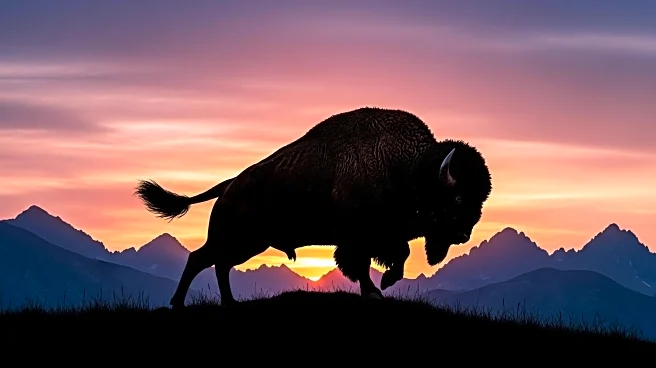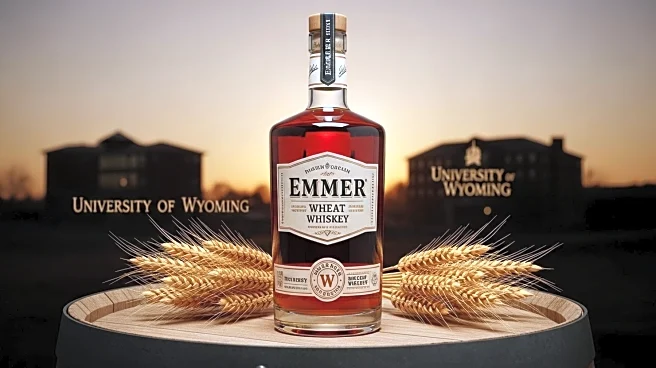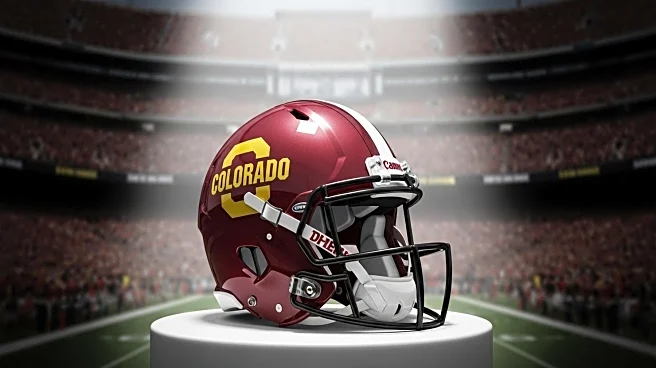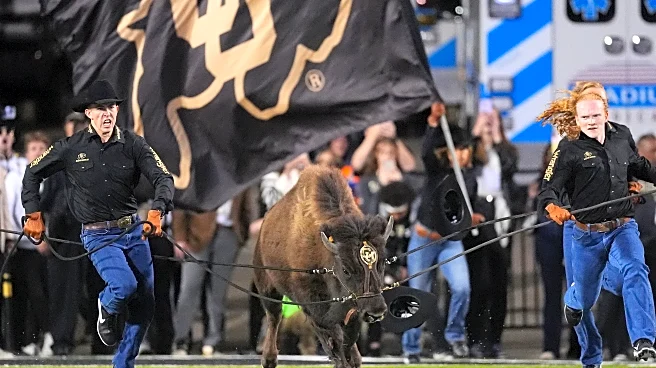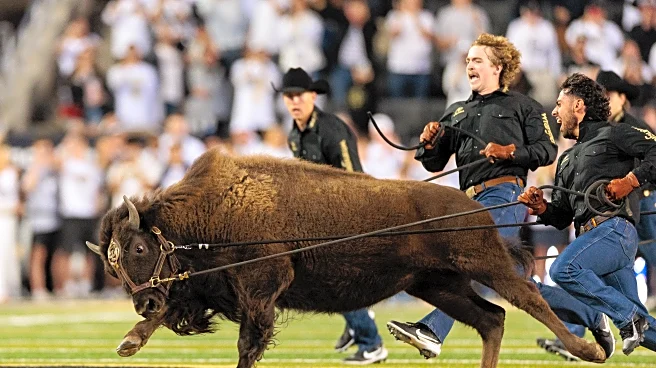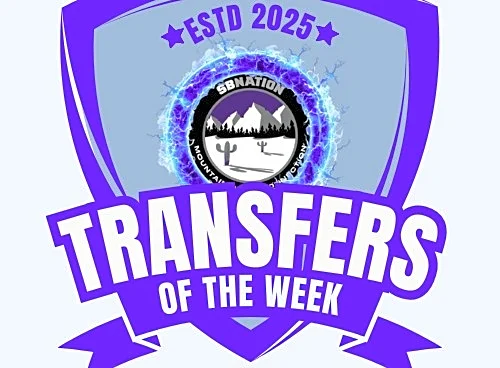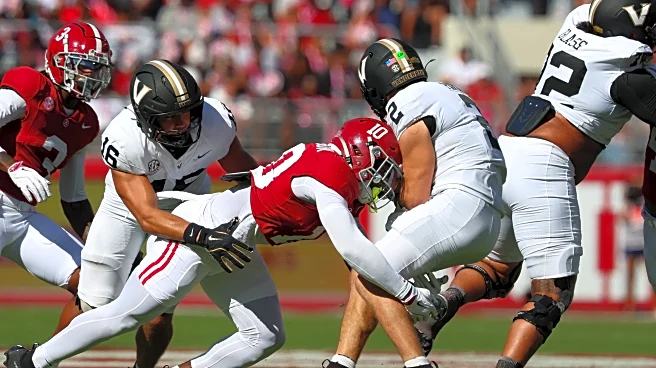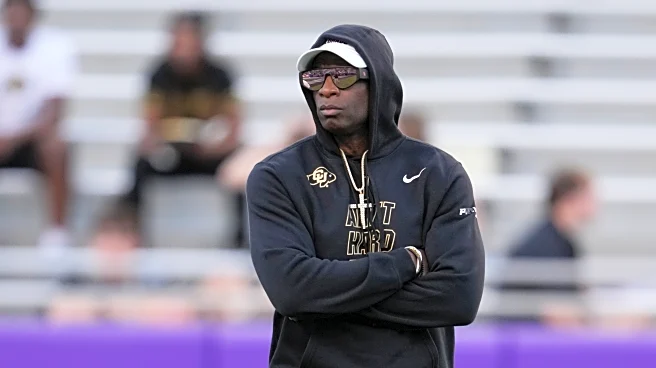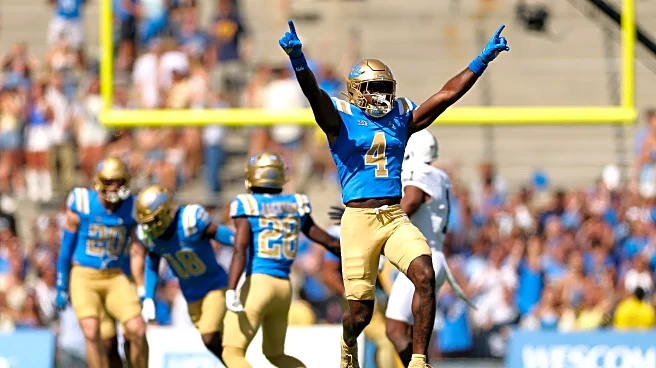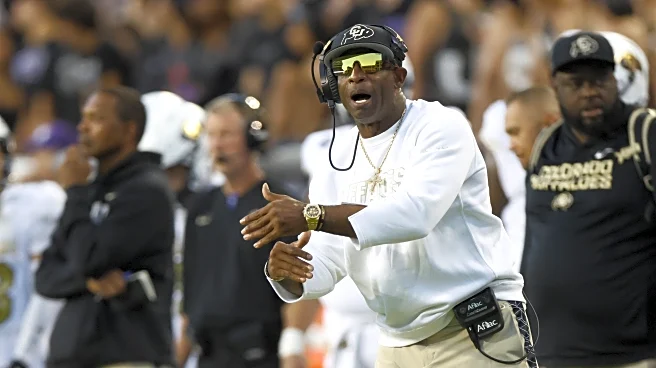What is the story about?
What's Happening?
The University of Colorado has introduced its new live buffalo mascot, Ralphie VII, who has quickly become a favorite among fans. The one-year-old, 700-pound buffalo made her debut on September 20 against Wyoming, replacing the previous mascot, Ember, or Ralphie VI, who retired. In keeping with tradition, Ralphie VII was given a nickname after her first run, and she is now known as 'Brandy,' inspired by the 1972 hit song 'Brandy (You're a Fine Girl)' by Looking Glass. The tradition of naming Ralphies dates back to 1967 when the original Ralphie was introduced. Previous Ralphies have had names such as Moonshine, Tequila, Rowdy, Blackout, and Ember.
Why It's Important?
The introduction of Ralphie VII continues a long-standing tradition at the University of Colorado, where the live buffalo mascot plays a significant role in school spirit and game day festivities. The mascot is a symbol of pride and unity for the university community, enhancing the atmosphere at sporting events. The choice of the name 'Brandy' reflects a creative approach to maintaining this tradition, connecting the mascot to popular culture. This event underscores the importance of mascots in collegiate sports, serving as a rallying point for fans and a representation of the university's identity.
What's Next?
Ralphie VII is expected to continue participating in game day runs at Folsom Field, further solidifying her place in the university's traditions. The mascot's presence is likely to boost fan engagement and attendance at games, as students, alumni, and supporters rally around the new Ralphie. The university may also explore additional ways to incorporate Ralphie VII into promotional activities and community events, leveraging her popularity to enhance the school's brand and outreach efforts.
Beyond the Headlines
The tradition of live animal mascots raises questions about animal welfare and ethical considerations. While Ralphie VII is a beloved figure, the university must ensure her well-being and safety during public appearances. This includes proper training, care, and handling to prevent stress or injury. The use of live mascots also reflects broader cultural practices in sports, where animals are often used to symbolize strength and resilience. As societal attitudes towards animal rights evolve, institutions may face increased scrutiny and pressure to adopt more humane practices.
AI Generated Content
Do you find this article useful?
